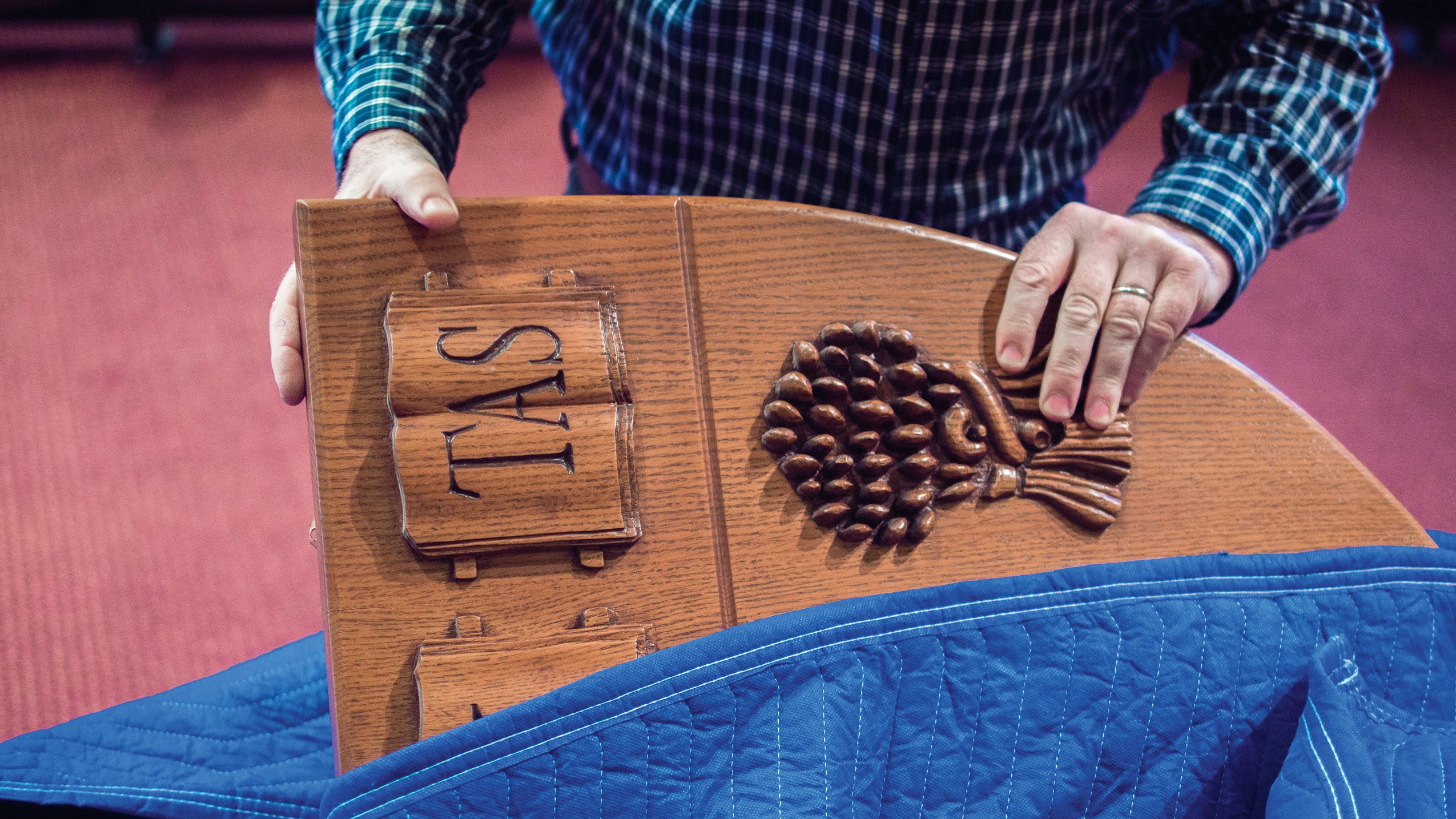On March 14, the Harvard Corporation voted to retire the Harvard Law School shield, following the recommendation of an HLS committee. The shield is modeled on the family crest of Isaac Royall, whose bequest endowed the first professorship of law at Harvard. Royall was the son of an Antiguan slaveholder.
“The Corporation agrees with your judgment and the recommendation of the committee that the Law School should have the opportunity to retire its existing shield and propose a new one,” wrote Harvard President Drew Faust and Harvard Corporation senior fellow William F. Lee in a March 14 letter to HLS Dean Martha Minow.
They also wrote that with the HLS bicentennial approaching in 2017, “we believe the School should have the opportunity to propose a new shield, that in the report’s words ‘more closely represent[s] the values of the Law School’—one conducive to unifying the Law School community rather than dividing it.”
By early April, the shield, which was modeled on the Royall crest, was removed from sites all over campus.
In a message to the HLS community announcing the corporation’s decision, Minow wrote: “We cannot choose our history but we can choose that for which we stand. Above all, we rededicate ourselves to the hard work of eradicating not just symbols of injustice but injustice itself.”
“We rededicate ourselves to the hard work of eradicating not just symbols of injustice but injustice itself.”
In 1936, the Harvard Corporation and Radcliffe trustees adopted seals for 27 Harvard academic units, naming the Royall crest, with its three sheaves of wheat, as the HLS shield.
Research by Visiting Professor Daniel Coquillette ’71 for his new history of HLS surfaced the ties between the Royall family and slave labor. In 2007, Janet Halley also explored the topic in the lecture she gave when she became the Royall Professor. Each year, Minow has talked to incoming 1Ls about the Royall legacy, citing slavery as an example of how injustice is sometimes perpetuated through law.
Last October, amidst activism on issues of race and inclusion on campus, a group of Harvard Law School students formed an organization called Royall Must Fall to demand that HLS discontinue using the Royall family crest as its symbol.
In November, Minow appointed a committee of HLS faculty, legal historians, students, alumni and staff to evaluate whether HLS should continue using the shield.
On March 3, the committee issued its report recommending to the corporation that HLS abandon the shield. “We believe that if the Law School is to have an official symbol, it must more closely represent the values of the Law School, which the current shield does not,” the report said. Two members of the group—Professor Annette Gordon-Reed ’84 and Annie Rittgers ’17—submitted “A Different View,” arguing that HLS should maintain the current shield, “tying it to a historically sound interpretative narrative about it.”
“The enslaved at the Royall Plantation and the graduates of Harvard Law School should be tied together as they have been without our knowledge for so many years, and as they always will be whether we choose to hide that connection from the world or not. Disaggregating the benefit achieved from the labor of the enslaved—the money accrued from the sale of Royall land—from the ‘burdens’ of being constantly reminded of from whence that money came, and of letting people outside the community know from whence it came, would be an abdication of our responsibility to the enslaved and a missed opportunity to educate,” they argued.
The Harvard Corporation emphasized that, while they accepted the request to change the shield, “we do so on the understanding the School will actively explore other steps to recognize rather than to suppress the realities of its history, mindful of our shared obligation to honor the past not by seeking to erase it, but rather by bringing it to light and learning from it.”
